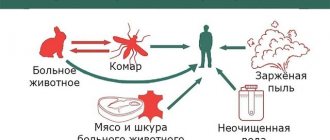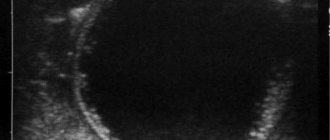- Causes
- Symptoms of chronic rhinitis
- Kinds
- Diagnosis of chronic rhinitis
- Possible complications
- Treatment of chronic rhinitis in adults
- Treatment at home
- Folk remedies against chronic rhinitis
- Drug therapy
- Physiotherapy for the treatment of rhinitis
- Surgical treatment of chronic rhinitis
- Prevention
Rhinitis in most cases is acute. In some patients, the inflammation becomes chronic, affecting all layers of the mucous membrane, and in some cases affecting the bone walls of the nose. Treatment of chronic rhinitis in adults and children is a complex task that requires the attention of a specialist - an otorhinolaryngologist.
Causes
Chronic rhinitis is often allergic in nature and is associated with diseases such as hay fever and bronchial asthma.
Non-allergic rhinitis occurs for a variety of reasons. We can speak of a chronic course if an exacerbation of the pathology is observed for at least a week annually. In this case, the symptoms are not associated with exposure to allergens and are more persistent.
Options for non-allergic rhinitis:
- idiopathic - does not have a clearly defined cause, usually associated with frequent colds;
- vasomotor - occurs due to circulatory disorders in the mucous membrane under the influence of cold or dry air, tobacco smoke, polluted environment, strong odors (cosmetics, household chemicals), changes in atmospheric pressure;
- hormonal - manifests itself during pregnancy, menopause, impaired activity of the thyroid gland;
- atrophic - can develop after surgery on the sinuses or with prolonged use of decongestants;
- nasal eosinophilia syndrome - an inflammation of a non-allergic nature, in which eosinophils - cells involved in hypersensitivity reactions - are found in the nasal discharge;
- professional – occurs during long-term work in conditions of ambient air pollution with dust and harmful gases;
- medicinal – develops as a complication when taking oral contraceptives, some antihypertensive drugs, antidepressants, anti-inflammatory drugs and drugs to eliminate erectile dysfunction.
Chronic rhinitis may be associated with structural abnormalities of the nose, such as a deviated septum, perforation, tumor, polyps, or foreign bodies.
In rare cases, chronic rhinitis accompanies conditions such as sarcoidosis, cystic fibrosis, gastroesophageal reflux disease, and polyangiitis.
To successfully treat chronic rhinitis in adults, it is necessary to eliminate its causes.
Stages of the disease
As vasomotor rhinitis progresses, it goes through three stages of development:
- First stage. Symptoms are not expressed; the nose becomes blocked when there is an unpleasant odor or when there is a change in temperature.
- Second stage. Inflammation of the mucous membrane begins, and the person is bothered by attacks of itching. Possible development of polyps.
- Third stage. The patient loses his sense of smell, nasal discharge begins, and there is a feeling of mucus in the throat. Immunity decreases.
At risk are people who live in places with high levels of climate humidity, who are predisposed to bad habits and exposure to allergens, as well as those who have unstable hormone levels in the body.
Symptoms of chronic rhinitis
Chronic rhinitis is accompanied by prolonged difficulty in nasal breathing. There is also a deterioration in the sense of smell, nasal discharge, the formation of mucus flowing down the back wall of the throat, and cough.
Vasomotor rhinitis is accompanied by episodes of sneezing with the release of copious liquid discharge and difficulty breathing through the nose.
With allergic rhinitis, itching and burning in the nose and eyes, severe runny nose, swelling, and sneezing appear.
In severe cases, the nasal mucosa becomes crusty and there is an unpleasant odor when breathing. Atrophic rhinitis is accompanied by dryness in the nasal cavity and pharynx, and nosebleeds.
Often, a patient with chronic rhinitis becomes dependent on decongestants - nasal drops and sprays that temporarily restore normal nasal breathing.
We treat from a young age
Very often, people get so used to a constant runny nose that they even stop talking to the doctor about it, and use drops every day, because it’s easier. They come, for example, with ear congestion and are very surprised when you ask them about their nose; they don’t know about the direct dependence. “I'm so used to it. I don’t even know what it means to breathe well through my nose; I haven’t been breathing through my nose since childhood.”
Meanwhile, special attention should be paid to nasal breathing in children. Chronic diseases of the nasopharynx can lead to chronic otitis and hearing loss, which parents pay attention to much later, because with such otitis there is no pain syndrome.
Kinds
The classification of I. B. Soldatov (1990) is used. According to it, the following types of chronic rhinitis are distinguished:
- catarrhal - manifested by intermittent or mild swelling, redness of the mucous membrane, chronic runny nose; when a decongestant is applied to the mucous membrane, the swelling disappears;
- hypertrophic – can be limited or diffuse, associated with thickening of the mucosa and narrowing of the lumen of the nasal passages; decongestant test is often negative;
- atrophic - can also be limited or diffuse, associated with thinning of the mucous membrane, the disappearance of glands and olfactory receptors in its thickness, fragility of blood capillaries; severe form of atrophic rhinitis - fetid runny nose, or ozena;
- vasomotor – allergic or neurovegetative, caused by a violation of vascular regulation.
Causes and course of the disease
The cause of chronic rhinitis is disorders in the nasal mucosa, which are caused by frequent acute inflammatory processes in the nasal cavity, adverse environmental influences: dry, hot and dusty air, prolonged exposure to cold, mercury vapor, nitric and sulfuric acid, exposure to radiation.
The development of chronic rhinitis is influenced by:
- Diseases of the kidneys, cardiovascular and endocrine systems;
- Functional changes in the nervous system;
- Inflammation in the nasal cavity, sinuses and nasopharynx;
- Hereditary prerequisites;
- Developmental defects;
- Various injuries;
- Chronic tonsillitis;
- Very long-term use of vasoconstrictor drops.
The following forms of chronic rhinitis are distinguished: catarrhal, hypertrophic and atrophic.
The catarrhal form is characterized by changes in the epithelial layer and subepithelial layers, which manifest themselves in the form of:
- thinning of the surface epithelium;
- degeneration of ciliated columnar epithelium into squamous epithelium;
- enlarged goblet glands;
- expansion of mucous glands.
With a long course of the disease, sclerosis may occur in the subepithelial layer.
With hypertrophic chronic rhinitis, a proliferative process (the process of tissue growth) is observed. The epithelium is diffusely thickened and in some places increased in size. Thickening of the basement membrane is observed. In the area where the glands are located and in the subepithelial layer, the fibroplastic process begins. Fibrous tissue puts pressure on the cavernous plexuses of the shells, promoting their expansion and new formation of blood vessels. Cysts can form from compression of the gland ducts.
In the atrophic form of chronic rhinitis, there are: nonspecific atrophic rhinitis and specific (ozena). With nonspecific atrophic rhinitis, the following changes are observed in the mucous membrane: there is no mucus, the goblet glands disappear, the columnar epithelium loses cilia. In the later stages, inflammatory infiltrates (accumulation of cellular elements mixed with blood and lymph) appear in the subepithelial layer, changes in the mucous glands and blood vessels are observed.
Vasomotor rhinitis with a neurovegetative (reflex) form is classified as a separate form of chronic rhinitis. The development of this form is influenced by a violation of the nervous mechanisms with the occurrence of a hyperplastic reaction of the mucous membrane: the lining epithelium thickens, the number of goblet glands increases, swelling of the underlying layer and dilation of blood vessels are observed. Over time, collagenosis (damage to connective tissue) occurs.
Diagnosis of chronic rhinitis
To recognize chronic rhinitis, basic and additional research methods are used. The main ones include collecting complaints, medical histories, as well as rhinoscopy, blood tests and radiography of the paranasal sinuses. Characteristic signs of chronic rhinitis identified during such studies:
- anterior rhinoscopy: thickening and redness of the surface of the nasal turbinates is determined, pathological discharge or crusts are visible, the mucous membrane may be pale, cyanotic, swollen; sometimes polyps or thinning of the bone structures of the nose are detected;
- blood test: with allergic rhinitis, an increased level of eosinophils is often found; with a long course of the disease, anemia cannot be ruled out; the cause of nosebleeds may be a pathology of platelets or blood clotting, which is also determined by this analysis;
- X-ray of the nasal sinuses: a narrowing of the nasal passage, thickening of the inferior turbinate, signs of ethmoiditis are determined, and symptoms of damage to the paranasal sinuses are often added.
If necessary, the ENT doctor will refer the patient for additional examinations, which may be necessary for differential diagnosis and proper selection of therapy:
- video endoscopic examination of the nasal cavity, allowing for a detailed examination of pathological areas of the mucous membrane;
- rhinopneumometry, during which air is supplied and pumped out into the nasal cavity, and the amount of pressure that can overcome difficult nasal breathing is determined;
- cytological examination of smears from the surface of the mucosa to study the cellular composition;
- bacteriological analysis of discharge and determination of the sensitivity of detected microorganisms to antibacterial drugs;
- Computed tomography provides a detailed image of the structures of the nose and surrounding tissues and is necessary when a tumor is suspected, a deformation of the nasal septum, and in other cases that are difficult to diagnose.
If necessary, the patient is referred for additional consultation with an allergist, pulmonologist, neurologist and other specialists.
An ENT doctor must differentiate chronic rhinitis from acute, as well as from specific forms of the disease (tuberculous and syphilitic), Wegener's granulomatosis and scleroma. Diseases of the paranasal sinuses are also excluded, since their joint damage is often noted - rhinosinusitis.
Be ready
If you plan to visit an ENT specialist, do not rinse your nose or put drops in before your appointment. This way you will wash away all the “evidence” and blur the real picture of the disease. ENT doctors don’t need to see a perfect nose, they need to understand what exactly is preventing you from breathing and why. In addition, it will not be possible to conduct the study on the same day and you will have to come back again, otherwise the result will be false.
American psychologists, led by Professor Patti Wood, have identified four main types of sneezers.
- Enthusiast - sneezes loudly, with soul. Usually this is a charismatic person who has a strong influence on others. This person has many exciting ideas and can encourage others to bring them to life. He is open to new people and opportunities. A good conversationalist.
- Pedant - tries to sneeze unnoticed, quietly, buried in a handkerchief. For such a person, the most important thing is relationships with others. He tries his best to avoid conflicts. Tolerant, calm, sometimes dependent on other people. A good listener and helper.
- The Thinker sneezes with self-esteem, taking a beautiful handkerchief from his pocket. As a rule, this is a reasonable person. Always thinks about his words and actions. Notices the mistakes of others. He is a broad-minded man who has his own opinion on everything. Likes to read books that make you think. He does all the work independently. He usually rests at home, enjoying his solitude.
- A loner sneezes quickly and loudly. This is, as a rule, a decisive and fast person who demands the same from those around him. Has no habit of relying on others. Leader. A good leader. Doesn't like being used.
Treatment of chronic rhinitis in adults
Medical intervention is aimed at restoring nasal breathing. This significantly improves the quality of life of patients, although it may be impossible to completely get rid of chronic rhinitis.
Treatment at home
A person suffering from chronic rhinitis can lead a normal life and play sports. Often, regular physical activity leads to normalization of the functioning of vasoregulatory nerve centers, and the manifestations of vasomotor rhinitis recede.
If the inflammation of the nasal mucosa is of an allergic nature, elimination (removal) of the allergen from the external environment is necessary (fighting dust, avoiding contact with pollen or pets, and so on).
For chronic rhinitis, humidifying the air in the room is useful. The patient is advised to avoid spicy and hot foods, as well as sweets. Breathing exercises are shown.
Folk remedies against chronic rhinitis
For chronic rhinitis, the following alternative treatment methods may be useful:
- drinking decoctions of black and red currant branches, marshmallow and eucalyptus leaves;
- rinsing the nose with infusion of calendula mixed with chamomile flowers;
- compresses on the nasal area with grated raw onion;
- ingesting a mixture of grated lemon and honey;
- in the absence of allergies - instillation of eucalyptus, peach, rose, sea buckthorn, olive oils into the nostrils.
These simple remedies cannot rid the patient of the disease, but can enhance the effect of drug treatment for chronic rhinitis.
Drug therapy
Treatment of chronic rhinitis in adults and children depends on its form. For catarrhal cases, the following drugs are prescribed:
- antibacterial drops (Isofra) and ointments (Bactroban, 2% sulfanilamide ointment), antiseptics (2% salicylic ointment);
- silver preparations with an astringent effect (Protargol).
In the hypertrophic variant, sclerotherapy is prescribed. It includes the injection into the inferior nasal concha of the anti-inflammatory drug hydrocortisone (1 ml every 4 days, 10 injections in total) and the splenin biostimulator 0.5 - 1 ml every other day. Cauterization of thickened areas of the mucous membrane with chemicals is also used - silver nitrate, trichloroacetic, chromic acids. If such treatment is ineffective, surgery is performed.
For atrophic rhinitis, treatment is aimed at eliminating the symptoms:
- daily rinsing of the nose with saline solution with the addition of iodine, products based on sea water (Aqua Maris, Nazol Aqua, Sialor-Aqua, Aqua-rinosol and others);
- irrigation treatment - irrigation of the nasal cavity under pressure with mineral water, sodium chloride solution;
- irritants – 0.5% iodine-glycerol solution for application to the nasal mucosa.
For vasomotor rhinitis, the doctor may prescribe the following medications:
- antihistamines for oral administration (fexofenadine, desloratadine and others);
- antihistamines for topical use (Allergodil, Reactin, Tizin Alergy sprays);
- procaine in the form of endonasal blockades;
- glucocorticoid drugs for injection into the thickness of the mucous membrane.
Physiotherapy for the treatment of rhinitis
Treatment of chronic rhinitis in adults is complemented by physiotherapeutic techniques:
- endonasal UHF currents, microwave exposure, ultraviolet irradiation, helium-neon laser;
- endonasal electrophoresis of zinc sulfate, calcium chloride;
- insufflation (infusion) of fusafungin, rhinofluimucil, garlic juice, celandine, St. John's wort infusion, diluted solution of octenisept).
Surgical treatment of chronic rhinitis
Surgery is offered to patients with vasomotor or hypertrophic rhinitis that is not amenable to other types of therapy.
For vasomotor rhinitis, gentle techniques are used to reduce the volume of the mucous membrane in the area of the inferior turbinate: submucosal vasotomy, ultrasonic disintegration, submucosal laser destruction. If they are ineffective, a gentle conchotomy is performed - physical removal of part of the lower concha.
For hypertrophic rhinitis, vasotomy, submucosal disintegration by ultrasound, and gentle lower conchotomy are also used. Endoscopic osteoconchotomy and lateroconchopexy are also performed.
The choice of operation depends on the characteristics of the patient, the experience of the surgeon, and the available equipment. In modern clinics, such interventions are performed quickly, cause virtually no discomfort and are not accompanied by complications.
Prevention
Prevention of the development of rhinitis, its transition to a chronic form or the development of exacerbations of the disease includes the following points:
- prevention of acute viral infections, flu vaccination;
- refusal of long-term use of decongestants;
- use of respiratory protection equipment in hazardous industries;
- eliminating contact with allergens;
- treatment of sinusitis, tonsillitis, pharyngitis;
- therapy for obesity, heart, kidney and endocrine system diseases;
- creation of favorable microclimatic conditions in everyday life (humidification and air purification);
- treatment at sea resorts or in sanatoriums of the Caucasian mineral waters;
- hardening, breathing exercises.
For timely diagnosis of chronic rhinitis, we suggest contacting the specialists of the NIKIO center. Experienced doctors will quickly make a diagnosis and select the most appropriate treatment tactics for each patient. This will help the patient restore nasal breathing and get rid of the unpleasant symptoms of the disease.
Possible complications
Photo: imagepointfr / Depositphotos
Without treatment of rhinitis or if it is carried out incorrectly, the following complications are possible:
- sinusitis (inflammation of the paranasal sinuses);
- proliferation of the mucous membrane and the appearance of nasal polyps;
- formation of a permanent focus of infection;
- respiratory dysfunction;
- constant oxygen starvation;
- decreased immunity;
- headaches, increased blood pressure, disorders of the cardiovascular system.






